Whether you're designing a card game for fun or profit, running a Kickstarter campaign, or hoping to sell your ideas to publishers, these tips will help
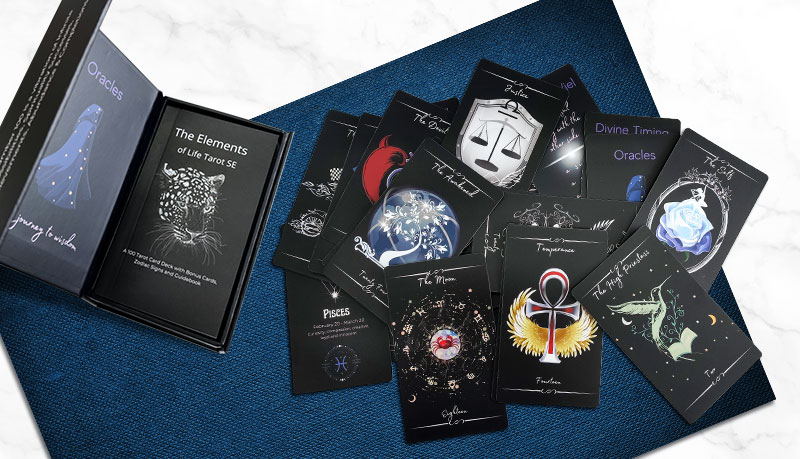
We’ve written here about the history of cards and card games, but today we’d like to look at the extraordinary renaissance of interest in new, custom card decks and games designed and published by independent game developers – think of collector packs, trading cards, tabletop game cards and more – and our top tips for designing your own. Over the last few years, as a major international offset printing company specializing in supporting indies of all stripes – authors, comic creators, artists, and game designers – we’ve seen a significant spike in custom card inquiries and sales and have enjoyed the opportunity to collaborate with a lively community of inventive creators to develop new and fascinating card sets. This trend shows no signs of slowing down anytime soon.
Card games are a perennially popular type of game that goes back into ancient history. Most traditional and modern card games involve players combining different cards in their hands or on the table to make powerful combinations or sets and using their strategic smarts to gain points or positions and eventually to win. There are different types or genres of cards games, each with their own specific rules, dynamics, themes, level of complexity, and gameplay mechanics. If you’re interested in designing your own card game, it can be an excellent way to challenge yourself creatively and test your abilities as an aspiring game designer without investing in a larger and more resource-heavy project, like a full-scale board game.
Recently, we’ve seen artists developing collectible cards around their paintings (digital and traditional); comic book creators working on card sets of their characters and story themes as promotional tools and to catch the “crossover market” between comic readers and gamers, which is considerable; and experienced and inexperienced game developers alike who have had a cool idea for a great game and decided to give it a shot.
If you’re already interested in cards and card games, you’ll almost certainly be aware of the abundance and diversity of card games on the market today, produced by independent creators, small startup companies, and “big name” publishers alike. This means there’s a lot of competition for a player’s attention, no doubt; but it also indicates a voracious market with ample room for new developers and games to enter the field. But if you want to design your own card game and sell it, you first need to understand what makes other cards games successful — and not so successful — amongst players and enthusiasts in the gaming community.
Drawing on our personal experience as keen gamers and our professional experiencing working with developers in the industry, we’ve put together the seven fundamental keys that we believe will help you figure out how to design a card game people want to play; and not only play, but pay for the pleasure of playing.
1. Know your community
This is probably the most important of all these “keys” but it’s often the most overlooked by enthusiastic newbies who—understandably—are keen to get started on the creative side as soon as they can. But before you even begin to think about designing a card game, you need to know who you’re designing it for. And that means drilling down to a more granular level of understanding than just, “people who like card games”. Why? Because that’s a huge demographic and includes people of all ages, tastes, interests, and walks of life. It may seem obvious, but you won’t be able to create a card game that will appeal to everyone — nor should you want to! Instead, you want to create a card game that caters to a specific community of players.
For example, if you’re designing a card game with a fantasy theme, it’s likely to be a game that appeals mostly to RPG fans or fans of the Lord of the Rings books and movies, for example. Likewise, if your game is a simple points comparison card game, you may need to aim it at a younger age group than you’d choose for a complex strategy game. Or, if you’re designing a card game with a sci-fi theme, create a game that appeals mostly to fans of the Star Wars franchise or the Dune books and movies or the long-running British Dr Who TV show. But it’s not just about theme and genre; it’s also about age group, education level, maybe even occupation, lifestyle, and income.
The community you’re designing for is the one that will play your game, and it’s up to you to make sure that the game appeals strongly to their interests and aesthetic preferences, that you know where they hang out both online and offline so that you can promote the game to the right people, and that they’ll be able to afford the game when you come to put it on the market. Very few games appeal to everyone. So you need to find a “niche” for whom you can design. And if you want your game to appeal to a niche audience, you need to find out what they like. In other words, before you develop your idea in detail and certainly before you begin designing at the functional and material level, you need to do at least a bit of market research. There are several ways that you can do this without any specialist marketing knowledge. Here they are:
- Get onto the relevant forums and social media groups where your target community hangs out — such as Facebook groups, Twitter (now X) communities, Subreddits, and Discords—and ask them what they’d like to play and why? As you’ll know if you belong to a few already, these communities are usually open and friendly places to chat and participate and you shouldn’t find it too hard to get some useful feedback and insights if you are genuine, enthusiastic and take part in discussions.
- Go to your local gaming nights, clubs, and cafes and ask people what type of card games they like. Also, just observe which games get picked more often, or even just which boxes are more worn out! Chat with the proprietors, too, as they often keep a close eye on what’s popular and what the current trends are and will mostly be happy to share their knowledge with budding new card game developers.
- Go to game conventions and run questionnaires or interview players of popular and less popular games. This may work best if you set up a stall and begin to promote any other games you’ve successfully brought to the table. If this is your first ever game, go to the round tables, sit in on panels, and spend a lot of time playing, watching, and chatting. These events are huge fun and you can get a ton of valuable information and insights and it won’t feel at all like work!
- If you have the budget, engage the services of a market research company to handle at least some aspects of this for you as they can run online surveys, access demographic databases and more to develop an accurate customer profile.
2. Know card games
Researching your target gaming communities is only one side of the coin. You’ll also need to do a lot of research into the psychology of playing games and the technical sides of designing a card game. Card games have been around for centuries, so there’s a lot of information out there for aspiring designers like yourself—books, websites, wikis, and more. But this really starts with you playing as many card games as you can.
Obviously, if you already have a broad idea of your demographic, then concentrate on card games that already position themselves clearly within your niche. If you’re into the tabletop role-playing genre and you want to develop a pure card game that will appeal to that community, there’s no need to play “Snap” or “Uno”! But that said, don’t confine your experiences too narrowly. In many games there can be a lot of crossovers and you might find that playing a space-themed game you get an insight into a mechanic that could be great for your game and you would have overlooked if you’d stuck strictly to your own genre.
Start out by looking at the top 10 most popular card games in your niche, as well as the top card games from specific eras and decades that may not be directly related to yours. You can also do research on specific card games you think are especially interesting and creative. By studying other card game designs and talking to other designers, you can get a better understanding of what makes them work and what doesn’t. You can also learn a lot by reading and studying how different games were designed and the stages, processes, and iterations that they went through. After all, every card game starts out as an idea in a designer’s head, right? But equally, no game ever sprang “ready to go”from even the most inspired creator’s mind: all games need development, which means working through several iterations to refine aspects of the game and the player experience until you are confident you have something the will work.
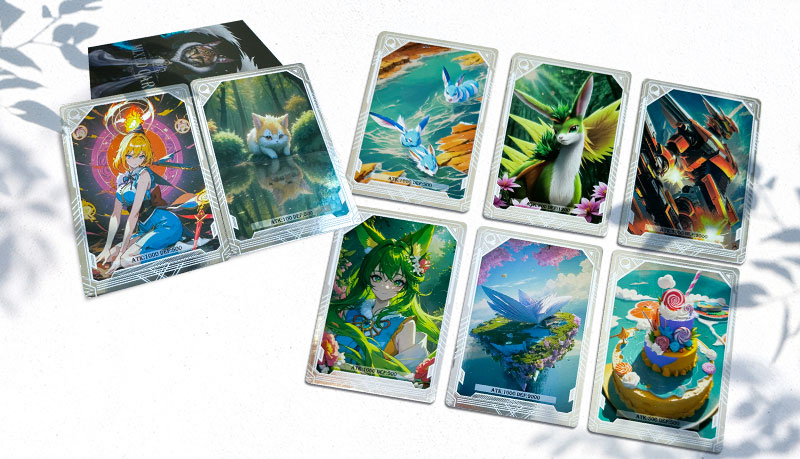
3. Work with a theme
There are many types of card games out there, from classic games like poker to newer games like Exploding Kittens, Skull, Dominion, and Race for the Galaxy, but there are still tons of ways to make your card game stand out from the crowd. This New York Times review of the best card games to come out in 2024 (whatever year you’re reading this!) is a great place to get a sense of the range of themes that card games can have.
One of the best ways to do this is to give your card game a unique theme. There are so many options, from classic formats to fantasy, sci-fi, general knowledge, sport themed, and more. Another great way to give your card game a unique twist is to make it a social game. There are several ways to do this, from adding in rules that encourage players to talk to each other or give them tasks to perform—like forfeits, for example, or a skills test—outside the game, to making the game a team effort. Experiment and test all the possibilities of which you can think and you’ll soon have a long list of ways to make the game experience more interactive.
4. Be authentic
Once you’ve done your research and have a good idea of what you want your card game to be in terms of your target community, your theme, the style, basic rules, mechanics, and win condition (if you’re not sure what all of those terms mean, read this) you need to make sure that you’re being authentic to yourself, knowledgeable about the genre, and honest with your game community. But don’t be too original, either! Don’t let yourself get caught up in creating something so completely new that no-one understands it; instead, create something that is authentic to you while also recognizable and belonging to an established niche. It’s a balancing act between originality and recognition.
This is especially important if you’re designing a card game with a specific theme that has been done before. For example, you may have an idea for a card game with a fantasy theme, as mentioned above. There are plenty of fantasy card games out there already, but you can turn this into a strength. After all, you’re not just designing a fantasy card game; you’re designing your fantasy card game. Give it a special twist and turn it into something only you could have done. Another example of this—and to show you innovation and tradition can work hand-in-hand with no compromise to your creativity—is the card game, Skulls, which we mentioned above. It’s colorful, fun, challenging, easy to pick up, original, immensely popular… and yet, it’s based on poker!
5. Establish a hook
Another thing you need to establish once you’ve come up with a theme and a general idea for your card game is a hook — a unique aspect or feature that sets your game apart from the others. For example, if you’re designing a card game with the “characters in conflict” theme but set in a distinct imaginary world, why not create a design that has three different card types (e.g. characters, places, and events) and explore how they can interact. And even though you’re designing a card game, you may want a design that uses added components such as dice, “money”, or a timer, maybe, to add more strategic depth and wider interactions. If you’re designing with a modern theme, you may want to make a card game that’s played with a smartphone app.
6. Provide meaningful choices for players
A key part of designing any game is to make sure that it provides players with meaningful choices. That means each player should be able to make different choices that affect how they play each round and to allow them the chance to influence the outcome of events. While the sense of agency in games is often illusory (much like the sense a reader head of the protagonist in a novel making free decisions when in fact the author has planned the plot in advance and already knows how it will end) it’s important for the players to at least feel that they have some influence, if not control, on the gameplay. This is especially important for card games, since they rely so heavily on the often quite random combination of different cards. For example, you could create a game where players must choose and combine different characters (e.g. warrior, healer, rogue) to form a quest party. Each party member could have a specific role, traits, and skills or powers. Likewise, aside from the cards dealt to a player’s hand, you could design a game with two or three additional packs containing cards which offer alternative kinds of actions and allow players to choose which to pick up from based on how the game is developing for them in that moment.
7. Don't forget the fun!
Finally, you need to make sure that you’re not forgetting the fun of the game. This is the most important aspect of designing a card game, after all! If there’s no fun in the design, there’ll be no fun in playing it, and then why even bother to make it?
Luckily, there are plenty of ways you can make sure your card game is fun to play. For example, as we’ve said, you can create a card game that has an interesting or unique theme. This could be anything from a futuristic sci-fi setting to a murder mystery scenario, a Wild West adventure, or an ancient fantasy kingdom. You can also create a card game that has a unique or quirky rule set, such as one that you play with dice, figures, or other components more commonly associated with board games. Or it could be fun because of the forfeit cards, which give the players silly things to do; or perhaps the game turns on the speed of play, making it a breathtaking thrill; or there’s just the right level of strategy and memory needed to make sure that players stay focused and concentrated. Every card game can be enjoyable, as long as you design it with the player’s experience in mind.
Creating your own card game can be a challenging but rewarding creative project. And self-publishing your cards to sell either through direct distribution channels or a crowdfunding campaign like Kickstarter can be a profitable side hustle or even develop into a full-time business opportunity. Remember that the best card games are the ones that fulfil the following criteria:
- Authentic to the designer
- Tailored to a specific audience
- Based on research and experience
- Provide players with meaningful choices
- Combine originality with tried-and-tested elements
- Are fun!
By following these seven keys, you can design a card game people will want to play — and so, be more likely to buy!
How to print your card game
If you need only a handful of copies of your card game for fun alone or to share with a small group of friends, digital printing may be your best option. But if you have a commercial reason to print your game — namely, you mean to sell it! — and you need 200+ decks, a smart rulebook, and a custom printed box to package it all in, then offset printing is the cheaper option and offers far-and-away the best quality.
Talk to us! We're here to help
At QinPrinting we’ve been making custom card decks, rulebooks, and stunning printed boxes for decades. We work with businesses and independent creatives alike. Chat to us today to discuss your ideas. One of our expert printers with experience in card design and manufacture will be happy to help and advise you. Or if you’re further along in the process and you have files ready to go to press, we’ll be delighted to give you an unbeatable, no-obligation quote. Let’s talk! You can call us on +86 21 6538 1716 (bearing in mind time zones) or shoot us an email to [email protected] and one of our design and printing experts will get back to you. We can’t wait to work with you!





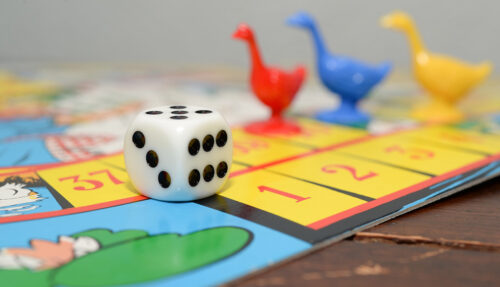
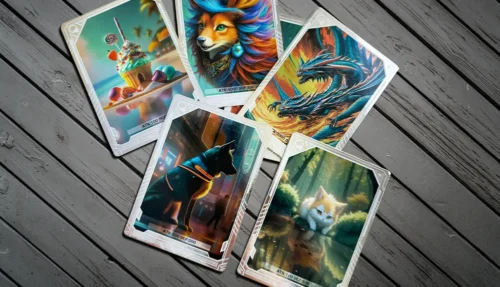
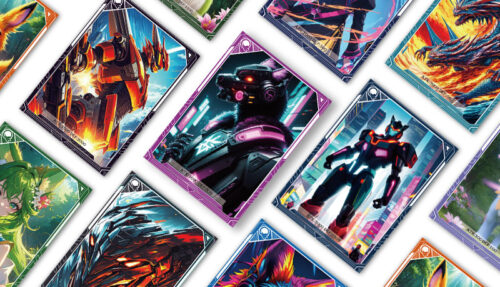
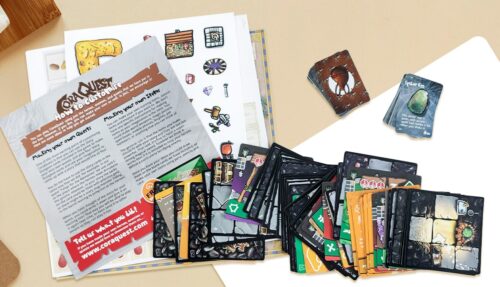
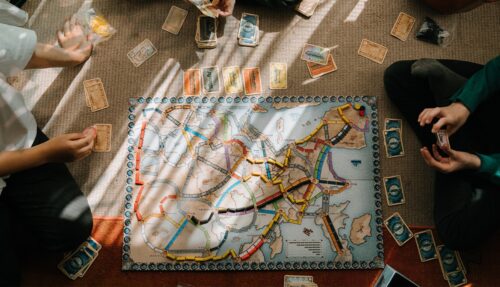
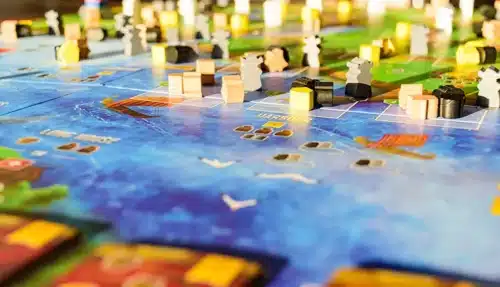
2 thoughts on “How to Design a Card Game People Want to Play”
Could I get a deck size recommendation for fast, fun and easy games, and a price quote for 10 decks of that size?
Hi Jericho, thanks for reaching out. For a game that's fast, fun, and easy to play, it's probably a good idea to choose one of the standard playing card sizes with which folks are already familiar. So, say, a 2.5" x 3.5" deck printed on 300 gsm coated paper could be perfect for your games. But the devil's always in the detail! The best thing is to have a chat about your project and decide together what would be the best solution for your needs. We've asked one of our experts to contact you via email, so keep an eye out for that (don't forget to check your spam folder and add us to your safe list!). In the meantime, you can find out more about card design specs here: https://www.qinprinting.com/game-card-printing/ We hope that helps. If you have any other questions, just ask. We look forward to working with you!